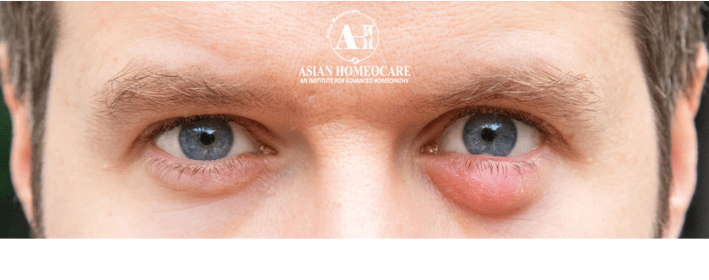STYES
A stye is a small, painful lump or bump that forms on the eyelid due to an infection of an oil or sweat gland.


Causes for styes:
Bacterial infection: Styes are commonly caused by an infection of the oil or sweat glands on the eyelid, often due to the bacterium Staphylococcus aureus.
Poor hygiene: Not keeping the eyelids and surrounding areas clean can increase the likelihood of bacterial growth and stye formation.
Rubbing or touching the eyes: Frequent rubbing of the eyes with unclean hands can introduce bacteria and cause an infection.
Cosmetic use: Using expired or contaminated eye makeup and not properly removing makeup can contribute to stye development.
Weakened immune system: A compromised immune system can make individuals more susceptible to infections, including styes.
Signs & Symptoms of Styes:
Pain and Tenderness: The affected area on the eyelid is typically painful and tender to the touch.
Redness and Swelling: The eyelid around the stye becomes red, swollen, and may appear puffy.
Bump or Pimple: A visible lump or pimple-like bump forms on the eyelid, usually near the base of the eyelashes or within the eyelid.
Watering of the Eye: Increased tear production and watering of the eye can occur due to irritation.
Sensitivity to Light: In some cases, sensitivity to light (photophobia) may be experienced.
Prevention of styes:
Wash Hands: Always wash your hands thoroughly with soap and water before touching your eyes or applying any eye drops or ointments.
Avoid Rubbing Eyes: Try not to rub or touch your eyes with unclean hands to minimize the risk of bacterial contamination.
Remove Eye Makeup: Remove eye makeup, such as mascara and eyeliner, before going to bed using a gentle makeup remover.
Avoid Sharing Eye Makeup: Do not share eye makeup or eye makeup tools with others to reduce the spread of bacteria.
Clean Eyelids: Regularly clean your eyelids and eyelashes with a gentle, tear-free cleanser to prevent the buildup of debris and bacteria.
Replace Old Makeup: Discard old or expired eye makeup products and replace them regularly.
"Explore related diseases: Insights, Stories, and Resources
Natural Relief for Styes: Homeopathy Treatment
The problem with styes is their recurrence, as they reappear in the same spot or another location even after treatment. Homeopathy medicine treats the existing condition and prevents the recurrence of styes.
Here are some common homeopathic remedies used for styes:
Pulsatilla: This remedy is often prescribed for styes with a tendency to recur. It may be suitable for individuals who experience thick, yellow discharge from the eye and feel better with cold applications.
Staphysagria: This remedy may be beneficial for styes that form from frequent rubbing of the eyes. It can also be used for styes that are hard and painful.
Hepar Sulph: It is commonly used for styes that are extremely painful, sensitive to touch, and may be associated with a feeling of splinter-like pain. Warm applications may provide relief.
Branches
Disclaimer - Privacy policy - Terms & Conditions
Refund Policy

Behind Pure O Naturals, Gurunanak Nagar, P & T Colony, Vijayawada-520008
Ph. 9551081082, 9551081083
Dharwad: 7019887005
Corporate Office
Clinic timings:
3rd Sunday of every month is Holiday
Morning: 9.30 am to 1.30 pm
Evening: 4.30 pm to 8.30 pm
